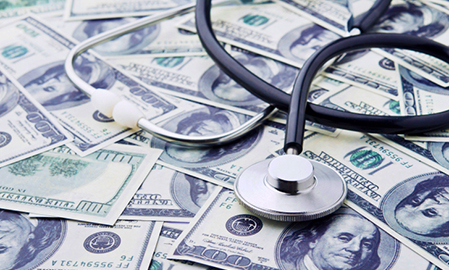Just as the country is ankle-deep in the open enrollment period on healthcare exchanges, more information about how costs influence patient care is rolling in.
In short: patients are avoiding medical care. In the case of minors, a policy statement by the American Academy of Pediatrics is recommending that the low-premium, high-deductible health plans, known as HDHPs, be off-limits for youth, because children are not getting the care they need. This is despite heathcare reform’s provisions that certain services, like immunizations, are free, suggesting that the focus on cost at the lower levels is overshadowing some incentives for good health.
The AAP writes that although deep research about the health impact of these plans has yet to be done, the cause-and-effect information which has been accumulated since the plans began in the early 2000s indicates that the cost-savings promised with these plans is not being fully appreciated. The authors note that there are exceptions, such as a greater use of generic medications among HDHP plan holders, but that the trade-offs include things like fewer office visits (hindering preventative care) and the absence of a doctor-patient relationship (which has an impact on care).
Quantifying the downstream impact is difficult, but the researchers note that saving money on the front end — as in the youthful years — is short-sighted considering “healthcare for a child costs, on average, about half of that for an adult younger than 65 years and approximately one-quarter to one-third that for a Medicare patient.” And then there is also this: older, adult HDHP users are avoiding primary care visits, which happen to be cheaper medical visits.
Instead, researchers write that patients with high-deductible plans essentially save up their health concerns. This potentially tips patients into costlier care, which HDHP are in fact intended to tamp down on by exposing patients to the cost of their care. Researchers argue that because lower-tier primary care is where patients feel the financial pinch first, the incentives end up working against plan designs.
The latest poll from Gallup News Service shows that cost concerns have only continued to climb since its 1991 poll. Although percentages have toggled up or down in intervening years, while 22% of adults told the polling service they avoided medical treatment for themselves or family members in 1991, that percentage hit 33% in November 2014. Almost half — 49% — said in November that they avoided treatment for “somewhat serious” medical concerns, while 17% said medical care remained off-limits even for “very serious” conditions.
These percentages are even a bit higher than during the Great Recession. In 2007, 15% told Gallup they avoided care for very serious conditions (17% said this in 2009), while 45% said cost got in the way of handling “somewhat serious” conditions in 2007 (42% said this in 2009).
Gallup notes that the latest cost avoidance is not limited to patients with incomes under the $30K mark. Instead, the market research firm said an increasing percentage of upper-income patients are also avoiding care, rising from 17% of this income group in 2013, to 28% in 2014.
Gallup’s researchers are not able to link avoidance to the type of insurance plan, but write that the results may “reflect high-deductibles or co pays.”
Statistics from the Deloitte Center for Health Solutions bolster this hypothesis with some insight about the impact out-of-pocket expenses have on consumers. Results from its 2013 study showed that nearly half (48%) of all consumers experienced an increase in their OOP spending for healthcare. And nearly 40% of respondents had financial difficulty paying for their healthcare in the previous 12 months.”







